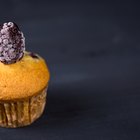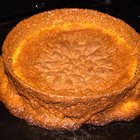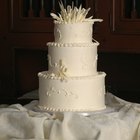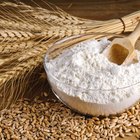KucherAV/iStock/GettyImages
Cake flour already has a fine texture, so sifting it isn't absolutely necessary, but it can be helpful for best results in a recipe. Your cakes will probably turn out fine regardless of whether you sift the flour, but sifting takes only a minute and will remove any lumps in the flour and properly aerate it. One cup of unsifted flour will actually be heavier and have more flour in it than a cup of sifted, aerated flour, so your final product may be denser and less fluffy than desired. Follow the instructions outlined in the recipe. The wording will reveal whether to sift the flour before or after you measure it.
Cake Flour 101
Cake flour is made from wheat, just like all-purpose flour, but it contains less protein so it makes less gluten when combined with liquids. Cake flour is also bleached more aggressively than all-purpose flour, which is why it is usually whiter. It's also finely milled so cakes have a fine, tender crumb. Cake flour is the ideal choice for cakes, but can also be used for quick breads, biscuits and even some types of cookies. It won't work for yeast breads, which depend on gluten for their chewy texture.
When to Sift
The question of when to sift cake flour -- or any flour -- is a confusing one. The answer lies in the wording found in individual recipes. In general, if a recipe calls for 1 cup sifted cake flour, sift the flour before you measure it. If the recipe calls for 1 cup cake flour, sifted, lightly scoop the cake flour into a measuring cup, level it off and then sift it. If you're substituting cake flour for all-purpose flour, use 2 extra tablespoons for every cup of flour. Measure this amount out before you sift.
Reasons for Sifting
Cake flour is already silky smooth, so you might wonder why it would need additional sifting. All types of flour -- and especially cake flour -- can settle and become compacted. Cake flour also can contain lumps, especially if you live in a humid climate. Beyond removing lumps or impurities, sifting helps aerate the cake flour. It will ensure you're adding the proper amount of flour to the recipe so it blends easily with other ingredients and has a light final texture.
Tools of the Trade
When it comes to tools for sifting, you've got a couple of options. You might remember -- or even own -- old-fashioned sifters, which resemble small, metal water pitchers, but have two metal sieves and a handle to turn the sieves against each other. You can still buy a sifter in most home stores, but sieves work more efficiently. They're also simpler to clean and they can be serve multiple purposes -- a boon in a small kitchen. Pick up two or three in various sizes and pour the flour into the sieve. Shake the sieve gently to release the flour into your mixing bowl.
Related Articles

Bread Flour vs. Cake Flour in Sponge ...

What Are the Functions of Flour in ...
What Kind of Flour Do You Use for a ...

What Causes Cupcakes to Fall?

What Kind of Flour to Use for Cupcakes?

The Best Cake and Cupcake Tools and ...

Can I Crumb Coat a Cake With Whipping ...

Can You Substitute Whole Wheat Pastry ...
What Is the Difference Between Cake ...

Reasons for Cakes Not to Rise
Is Unbleached Flour the Same as ...

Do You Still Need Baking Powder & Salt ...

Can I Substitute Bleached for ...

The Differences in Baking with Jumbo & ...

Can You Use Konjac Flour in Baking?

How to Decorate Fake Cakes
Does Cake Flour Contain Baking Soda & ...
Flour Substitute for Muffins

Does Hand Mixing Cakes Make Them More ...

Differences Between Bleached Flour & ...
References
Writer Bio
Julie Christensen is a food writer, caterer, and mom-chef. She's the creator of MarmaladeMom.org, dedicated to family fun and delicious food, and released a book titled "More Than Pot Roast: Fast, Fresh Slow Cooker Recipes."